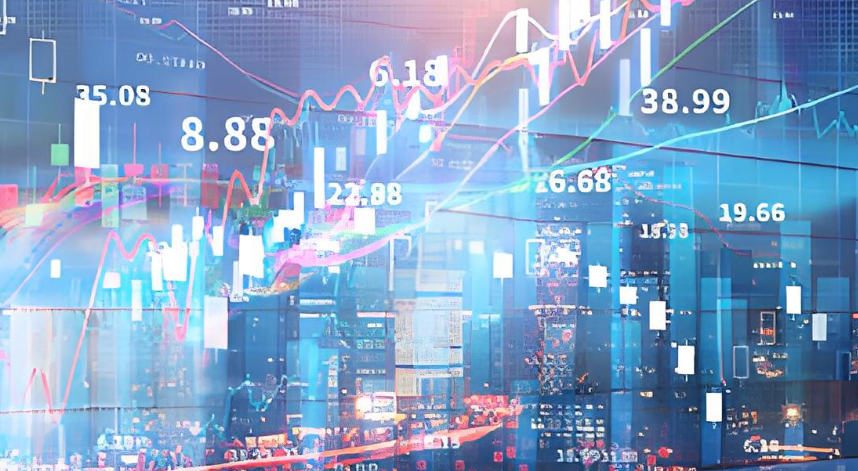US Q4 Economic Outlook
Advertisements
The Nowcast model operates somewhat like a financial forecaster, an essential tool in the realm of economics, especially for those attempting to navigate the complexities of today’s financial landscape. Developed by regional Federal Reserve banks in the United States, this model has become a crucial instrument for evaluating the health of the economy almost in real-time. To imagine the intricacies of this model, one can think of weather forecasting; just as meteorologists utilize atmospheric data to predict weather changes, economists analyze vast datasets and intricate algorithms to project economic trends. The Nowcast model serves as a vital compass for investors and businesses alike, allowing them to make informed decisions based on predicted economic trajectories.
For business owners and investors, understanding and interpreting the insights provided by the Nowcast model can inform a range of decisions. For instance, if the model suggests an impending economic growth, businesses may opt to ramp up production, hire new staff, and invest in expansion initiatives to capitalize on anticipated customer demand. Alternatively, a forecast indicating a potential downturn could lead companies to tighten their belts, cut down on expenses, and prepare for a bumpy ride. This predictive power allows stakeholders to navigate through economic uncertainties with a more strategic approach.
Recently, the Nowcast model issued a positive prediction; retail sales in December are expected to rise, driven by robust consumer spending. This assertion is notably grounded in several pertinent factors. One of the key contributors to this optimistic outlook is consumer confidence. Despite challenges posed by inflation and increased borrowing costs, many consumers remain assured about their future financial stability. For them, the feeling of job security and normalized incomes fuels a willingness to spend more on retail purchases.
Moreover, the job market continues to show resilience, bolstering disposable income for many households. With employment figures remaining strong, more individuals have the financial means to indulge in discretionary spending—be it purchasing new wardrobes, investing in home furnishings, or enjoying dining experiences. During this time of year, traditions surrounding the holiday season further incentivize spending, as consumers are often inclined to shop for gifts and celebrate with seasonal festivities. The confluence of all these dynamics sets a favorable stage for retail growth.

In parallel, the model forecasts an uptick in the PCE inflation rate, anticipated to rise to 2.6% by December. Understanding the PCE, or Personal Consumption Expenditures price index, is crucial for grasping how prices for goods and services are changing for consumers. This inflation rate reflects the pressures facing everyday individuals; rising costs in daily necessities, food items, as well as utilities effectively shrink their purchasing power. Most notably, an increase in inflation can trigger shifts in monetary policy by the Federal Reserve. Should inflation levels climb too high, it may compel the Federal Reserve to raise interest rates, consequently making loans for homes and automobiles more expensive and increasing the financial burden on consumers.
Equally important is the forecast for GDP growth in the fourth quarter. The Nowcast model estimates an annualized growth rate of 2.5%. Gross Domestic Product (GDP) is a critical benchmark for measuring economic activity and overall health. If this growth rate holds, it signifies positive momentum for the American economy, pointing to enhanced business performance and increased consumer spending.
The repercussions of achieving such a growth rate can be profound. When an economy grows, corporations usually experience higher profit margins, which can lead to expanded employment opportunities as businesses gear up to meet rising demand. Additionally, a robust GDP solidifies the United States' position in the global market, offering a buffer against economic volatility. However, it is vital to acknowledge the inherent unpredictability of the economy; unforeseen global events such as political unrest or natural disasters can drastically alter these forecasts.
Overall, the Nowcast model paints a mixed picture of the economic landscape through its predictions for December. The anticipated increase in retail sales driven by consumer spending bodes well for businesses, with the potential to enhance profitability across diverse sectors. Yet, the rising inflation presents a thorny challenge for households grappling with increased living costs, which could prompt the Federal Reserve to make difficult decisions regarding interest rates. The projected GDP growth of 2.5% serves as a positive sign, albeit one that is not immune to disruptions arising from domestic or international affairs.
Looking ahead, the future path of the American economy remains fraught with uncertainties. Global economic conditions are increasingly intertwined, with elements such as trade tensions and geopolitical disputes posing risks to the domestic market. However, should consumer spending continue on an upward trajectory and the job market holds its ground, there is cautious optimism that the American economy could sustain its growth momentum. On the other hand, if inflation persists and necessitates further interest rate hikes from the Federal Reserve, it may introduce formidable challenges to ongoing economic expansion.
In conclusion, the intricate web of economic indicators, compounded by consumer behavior and policy decisions, underscores the importance of continuous monitoring to navigate the uncertainties inherent in the financial landscape. Stakeholders—ranging from government officials to individual consumers—must keep a keen eye on economic indicators and adapt proactively to the shifts dictated by the marketplace.
Live a Comment